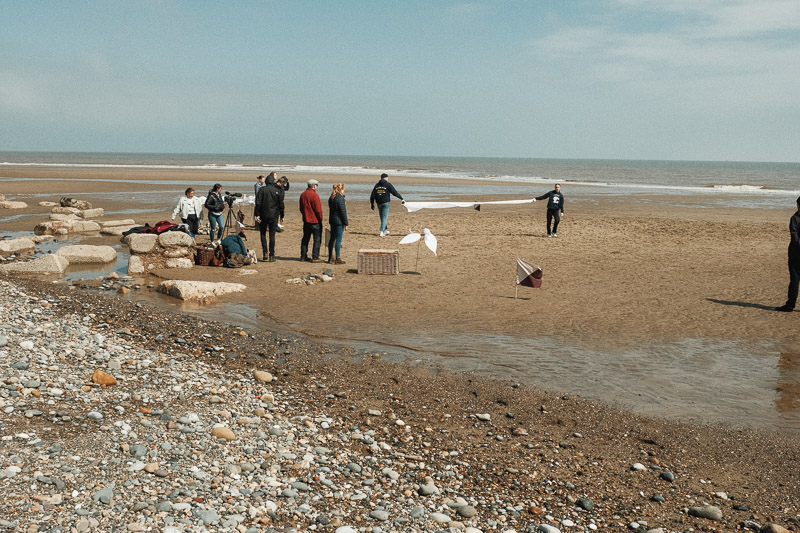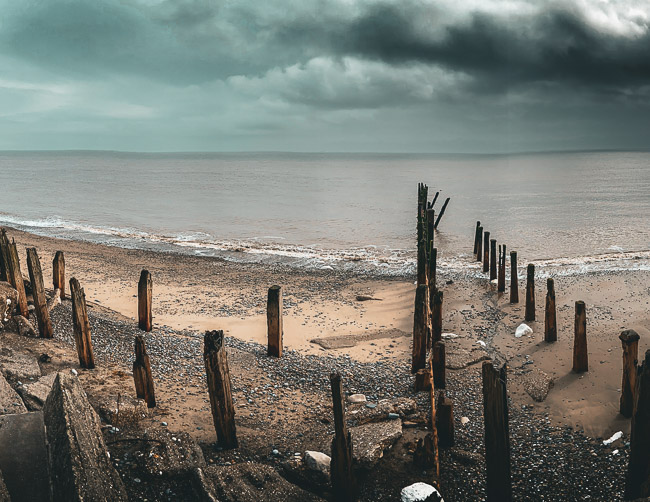Today, our scenography for Between Two Tides reached a new level of integration with the landscape. The design team have now spent spent months conducting research and development visits to the site, immersing ourselves in its natural features to understand how the coastline can become not just a backdrop setting, but a dynamic part of the performance itself.
We have experimented with the tactile and visual qualities of many of the the natural elements present: water, sand, rocks, and grasses. The movement of the sea, the shifting rivulets within the coastal ords present in the South Holderness, and the varying grains of sand that all offer unique textures and patterns – we are beginning to think about how these can be used in costume design and how a costume/landscape interface can function within the performance. We have also become fascinated by the indigenous chalk and ‘erratic’ rocks scattered across the beach, which provide a geological palette that is both ancient, and at the same time constantly changing. We want audience members to think about how these different natural grasses, rocks and pools frame the land and sea, shaping the vistas with their presence, and we are beginning to deploy techniques for subtly directing attention to certain parts of the landscape through performer gesture and movement; but we are realising that we also want our audiences to think about the huge expanses of time that have shaped this coast. Our audiences will be walking across millennia of change, movement and formation/deformation. Scenography for this show is accordingly becoming an exercise in ‘re-seeing’ a familiar landscape, encouraging both performers and audience members to notice how these natural elements transform when they are framed and highlighted in new ways.
Today we also began to frame light as crucial part of this process – as we carefully start to consider how to use direct sunlight in interesting ways during our performances (at a time of day when the sun will be high and casting short shadows towards Beacon Lagoons). We have also been thinking about reflected light off the moving sea and still pools of water, which is becoming a key part of our visual language, creating dynamic changes in tone and atmosphere. Wet and dry sand also reflect light differently, and the haze and mist that often hang over the coast at this time of year add another layer of complexity. Refracted light—that is being filtered through water vapour in the air—softens the landscape considerably, and will add a dreamlike quality to certain scenes.
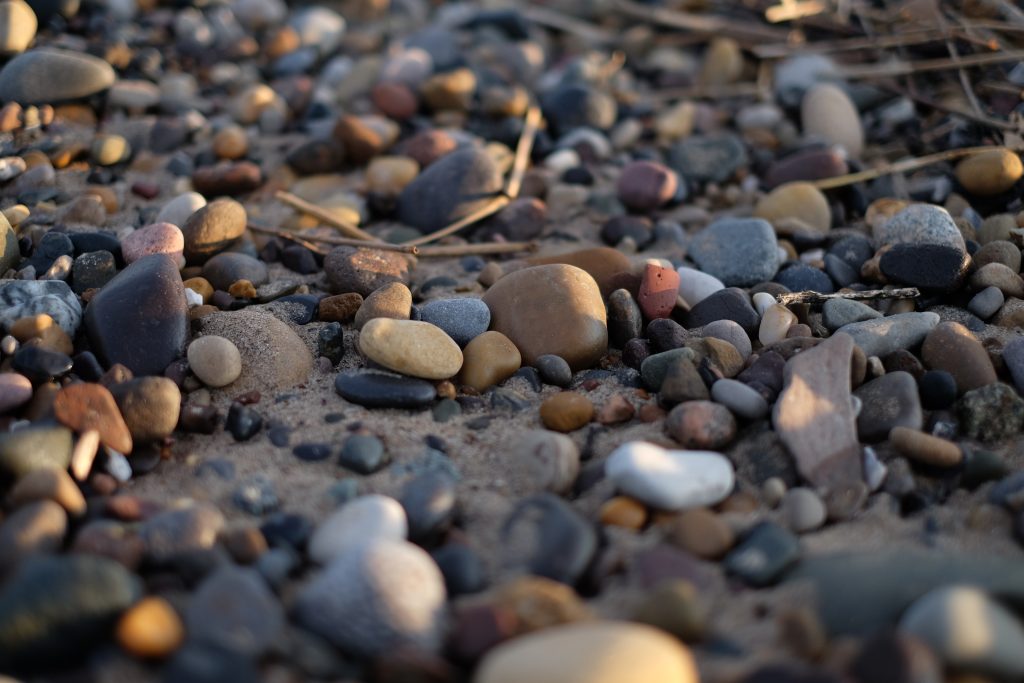
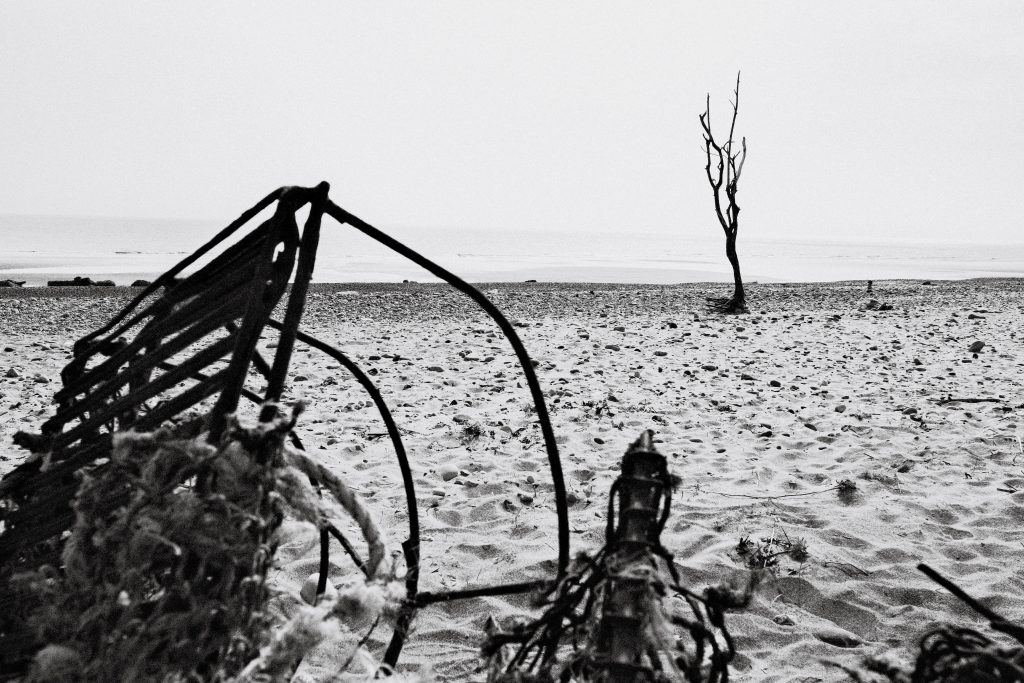
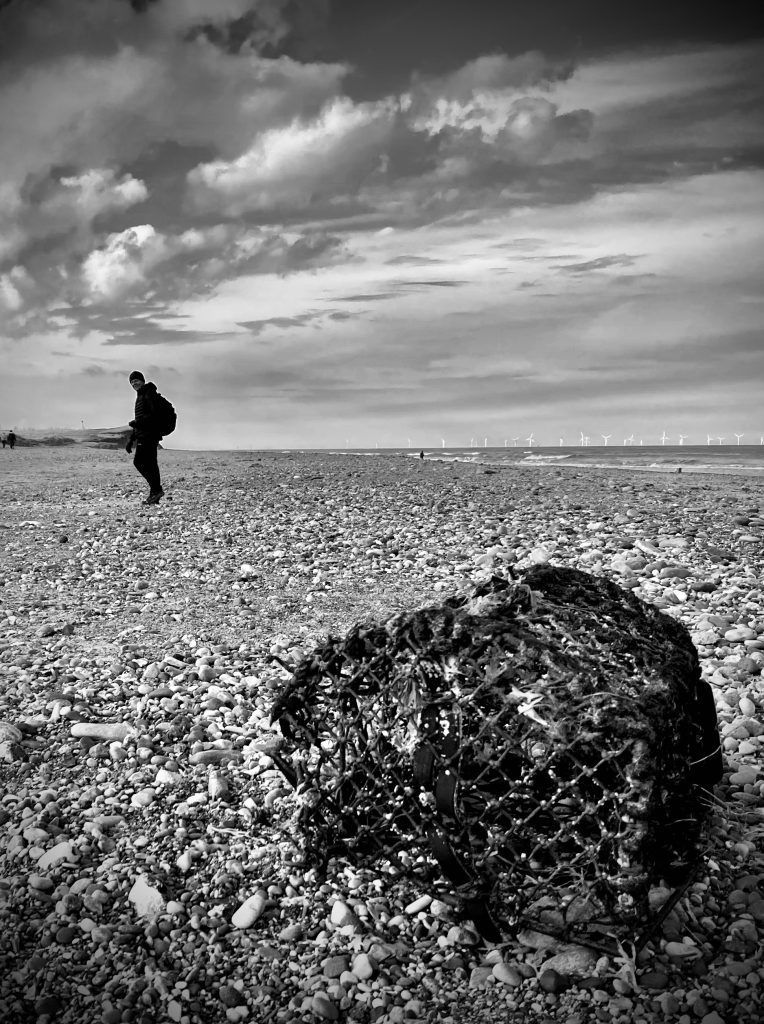
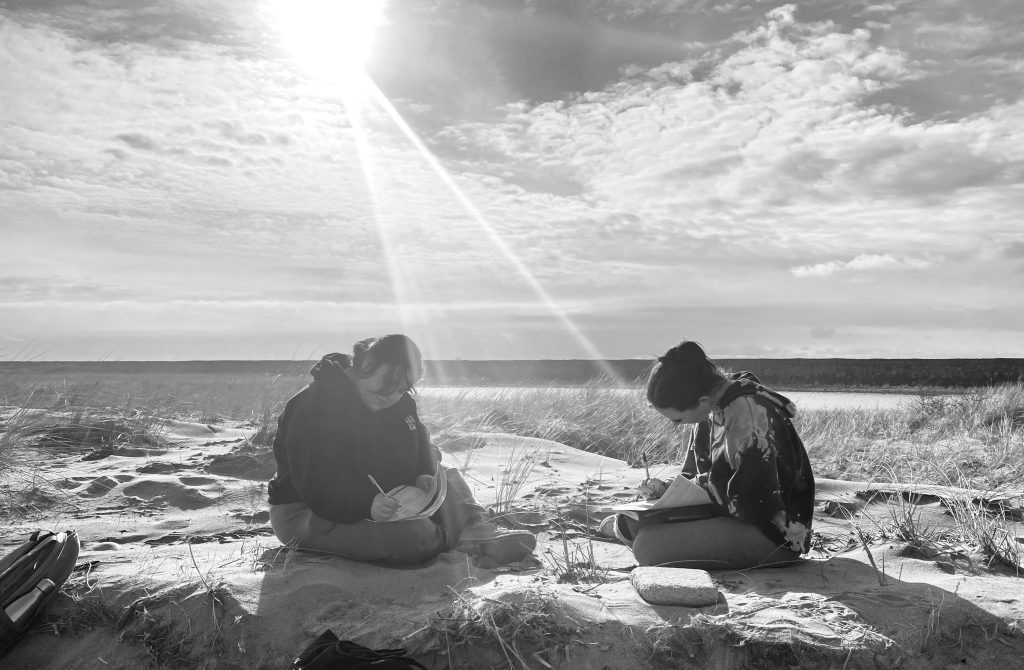
This focus on natural materials and light is becoming the foundation of our scenographic approach, allowing the site itself to take on an active role in the performance. By shifting the audience’s physical position during key moments, we will invite them to experience the landscape from new perspectives. At certain points, we now plan to move the entire audience, directing their gaze from seaward to landward vistas and back again, highlighting the historical and ecological significance of the site. We have also decided to incorporate tactile interactions—guiding audience members across the sand, inviting them to touch rocks and grasses—so they could feel the landscape beneath their feet and in their hands.
This layered approach, combining natural elements with strategic audience movement, will create a deeply immersive experience. The land and sea are more than a backdrop; they are the core of our narrative itself.


